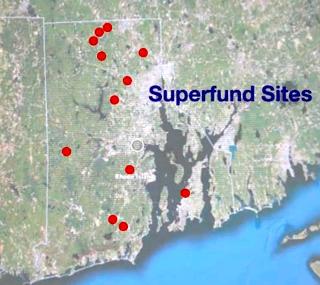Sep 26 2015
With a new federal grant of nearly $10.8 million over the next five years, Brown University researchers and students in the Superfund Research Program (SRP) will be able to advance their work studying how toxicant exposures affect health, how such exposures occur, how nanotechnologies could contain contamination, and how to make sure those technologies are safe.
 With a new grant, researchers can continue to address basic scientific issues raised by the potential for toxicant exposures at sites around the state.
With a new grant, researchers can continue to address basic scientific issues raised by the potential for toxicant exposures at sites around the state.
"There is more research to be performed," said Kim Boekelheide, program director, professor of pathology and laboratory medicine, and fellow of the Institute at Brown for Environment and Society (IBES). "Our scientific theme is integrated biomedical and engineering solutions to regulatory uncertainty, using interdisciplinary approaches to attack the really difficult contamination problems that matter."
The program is pursuing four integrated projects. In one led by Boekelheide, a team is looking at the physiological effects of exposure to toxicants like trichloroethylene on the male reproductive system. In particular he hopes to find the subtle differences in biomolecular markers in sperm that could allow for very early detection of exposure. Meanwhile in another line of research, Eric Suuberg, professor of engineering, is studying how vapors from toxic material releases can re-emerge from the soil entering into buildings built at or near the polluted sites -- and why it is hard to predict the level of exposure that inhabitants of these buildings may suffer.
In another project, Robert Hurt, an IBES fellow, SRP co-primary investigator and professor of engineering, is studying how graphene, an atomically thin carbon material, can be used to block the release and transport of toxicants to prevent human exposures. Hurt is also collaborating with Agnes Kane, an IBES fellow and chair and professor of pathology and laboratory medicine, who is leading a study of nanomaterial effects on human health, so they can be designed and used safely in environmental and other applications.
The program will also continue the program's community outreach efforts in which they work and share information with communities near the state's Superfund-designated and Brownfield contaminated sites. Scott Frickel, an IBES fellow and associate professor of sociology, is the new leader of community engagement. Theprogram also includes a research translation core in which researchers share their findings and expertise with the U.S. Environmental Protection Agency, state agencies, and professionals involved in contamination management and cleanup. A training core provides opportunities for interdisciplinary research, field work, and industry "externships" for graduate students in engineering, pathobiology, and social sciences at Brown.
The National Institute of Environmental Health Sciences of the National Institutes of Health provided the grant (number P42ES013660). The content is solely the responsibility of the authors and does not necessarily represent the official views of the National Institutes of Health.